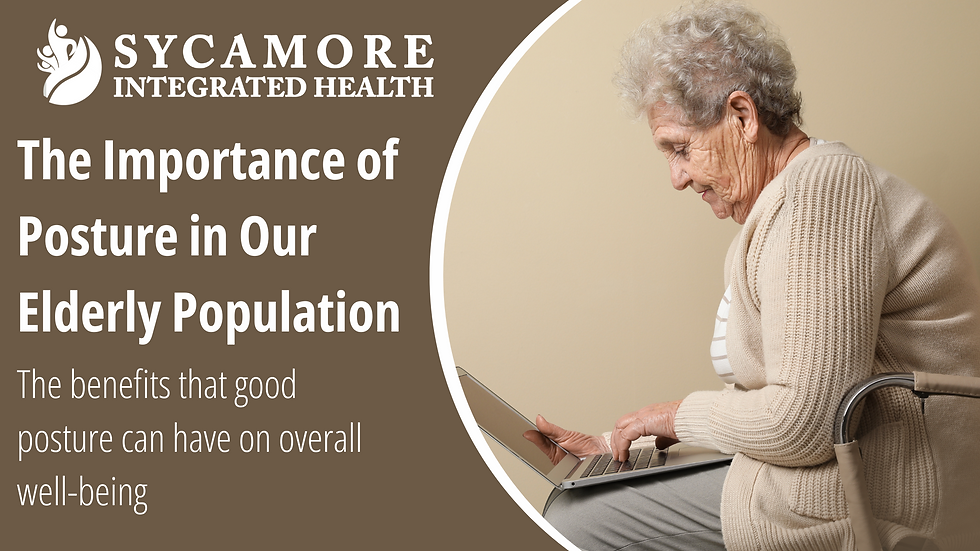The Importance of Posture in Our Elderly Population
- Sycamore Integrated Health

- Aug 27
- 2 min read

Bad posture in the elderly is a serious problem that can significantly impact their quality of life. It can contribute to a variety of health issues, including muscle pain, reduced mobility, and a higher risk of falls. Fortunately, there are simple actions that can be done to improve posture and avoid these problems.
The Problems with Poor Posture
As we age, our muscles and bones naturally weaken. This can lead to a forward slouch, often called kyphosis or "dowager's hump." This hunched position puts extra strain on the spine, neck, and shoulders, leading to pain and stiffness. It can also compress internal organs, which can affect breathing and digestion. Additionally, a stooped posture shifts a person's center of gravity forward, making them more unstable and increasing the likelihood of a fall. Falling is a major health risk for the elderly, often leading to fractures and a loss of independence.
The Benefits of Good Posture
Maintaining good posture has numerous benefits. It helps to keep the spine aligned, which reduces pain and strain on the body. An upright spinal posture allows for proper distribution of body weight and outside forces (read: gravity). This also allows greater mobility and flexibility, allowing older adults to perform daily tasks with more ease. Proper posture also improves balance, which is crucial for preventing falls. Furthermore, standing or sitting up straight can boost confidence and improve overall well-being.
Tips for Improving Posture
Improving posture doesn't require drastic measures. Simple, consistent habits can make a big difference.
Chiropractic & Physical Therapy: Chiropractic care can provide proper mobility and stability in joints and musculature, leading to improved posture. Physical therapy/rehabilitation can provide specific exercises and techniques to correct posture, increase strength, alleviate pain, and improve overall functionality.
Mindful Sitting and Standing: When sitting, keep your back straight against the chair, with your feet flat on the floor. When standing, imagine a string is gently pulling your head up towards the ceiling.
Gentle Exercises: Gentle stretches and exercises, like yoga or tai chi, can help strengthen core muscles that support the spine. Even a simple neck and shoulder roll can help release tension.
Supportive Equipment: Using a supportive chair with a lumbar cushion or an ergonomic pillow can provide extra support for the back and neck. Posture braces can aid in decompression of the spine; thereby, eliminating pain and pressure on the joints and increasing overall movement and strength of the core and spinal musculature.
Conclusion
While poor posture can directly affect the overall health and mortality of the elderly, it does not have to be the norm. Taking a proactive approach to posture can significantly improve the well-being of older adults. Seeking care from a chiropractor and rehab specialist can improve mobility, stability, and strength, while home exercises, bracing, and proper posture mechanics while sitting and walking can aid in balance. With the creation and continuation of new habits that target proper posture, our elderly population can live more comfortably, safely, and independently.




Comments